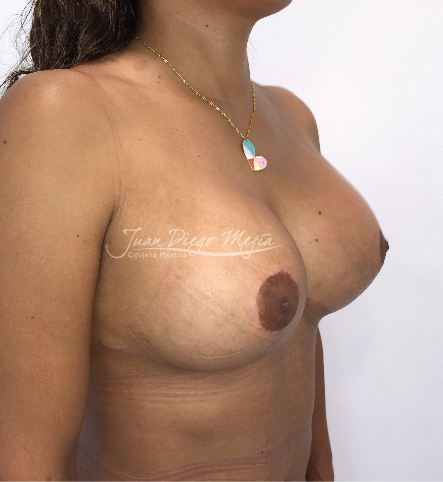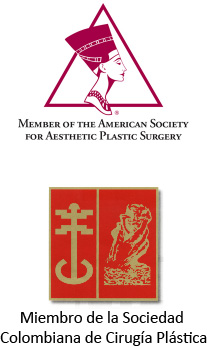What is a breast lift?
A breast lift or Mastopexy is the surgery used to correct or lift saggy breasts. The objective of this procedure is to lift the breasts, give them a nicer shape and change the size. Patients can opt for bigger, smaller or same size breasts.
Am I a candidate for this procedure?
If you feel your breasts sag, and you want them to be perkier, this is the procedure for you.
What do I need to know about this procedure?
There are three ways to lift the breasts. In breast with very minimal sagging, a lift with a scar around the areola can be done. This technique has a very minimal effect on the amount of lift and shape we can give to the breasts. In patients with moderate or severe sagging, a vertical or T scar is necessary to accomplish the lift. These techniques can achieve drastically lifts and give the breast the round perky shape patients desire.
A breast lift can be performed with or without implants. Both techniques will give the breasts a more lifted and perkier look. However, there will be a difference in final shape and size. If we do a lift without implants, the breast will end up looking smaller. Also, the upper pole of the breasts will eventually look a lot flatter (less cleavage) in comparison to breasts with implants. Patients that choose breast implants can play with the size. They decide how big or small they want their breasts to look. Also, the implants will give fullness to the upper pole making the breasts look rounder and with more cleavage.
Are there risks involved?
Every patient that goes into an operating room for surgery needs to be aware that risks do exist. However, complications in this specific procedure are extremely rare. Dr. Mejia will go over all the possible risks of this procedure with you during the initial consultation. It is very important that you are honest with Dr. Mejia about your medical history and habits for things to go as smooth as possible.
There is a new disease called Implant Associated Lymphoma (ALCL) that patients must know about. It is extremely rare and mostly related to the use of textured implants. Dr. Mejia does not use textured implants. We use only smooth and micro-textured which greatly decreases the possibility of this disease.
What is the aftercare like?
What to expect after surgery (what´s normal): pain, one breast a little bigger or more painful than the other, high riding breasts, nipple deformity, swelling, bruising, small blood discharge from the wound.
What is NOT normal after surgery and must notify Dr. Mejia immediately:
- Severe pain that doesn’t respond to the meds (specially severe pain in one breast more than the other)
- One breast MUCH bigger and more painful than the other
- One nipple darker than the other, or both nipples darker than usual
- Fever or signs of infection
You can take a shower the day after surgery. The tapes can get wet. You can dry them after the shower with the hair dryer on COLD. Don’t take any tapes off. The doctor will change them during the visits. The post-op bra should be worn for 1 month after surgery. Only take it off for showering. Post-op nausea is normal. Cold compresses can be applied over the top of the breasts for 3 days to help with the swelling.
Your body will tell you what you CAN and CANNOT do after surgery. If it hurts, don’t do it. If it doesn’t hurt, you may do it with caution. However, these are some general recommendations:
- No driving for a week
- No lifting heavy objects or going to the gym for a month.
- No sexual activity for 3-4 weeks
- Avoid sleeping face down until all the discomfort disappears (3-6 months)
The final shape and size of the breasts is seen when the swelling goes down. This is about 3 months after surgery. It is completely normal to feel the following things during the recovery process (3-6 months): persistent pain, the feeling that there is something inside your breasts (air or fluid), a stabbing sensation, a shocking sensation.
Wound dehiscence is very common in breast lifts or breast reductions. Surgical closure is rarely ever needed. The wound closes on its own with daily applications of antibiotic ointment. This can take 3-4 weeks.
How much downtime is there?
Patients can usually return to their regular routine after 7 days. No strenuous activity or exercise for 1 month.









